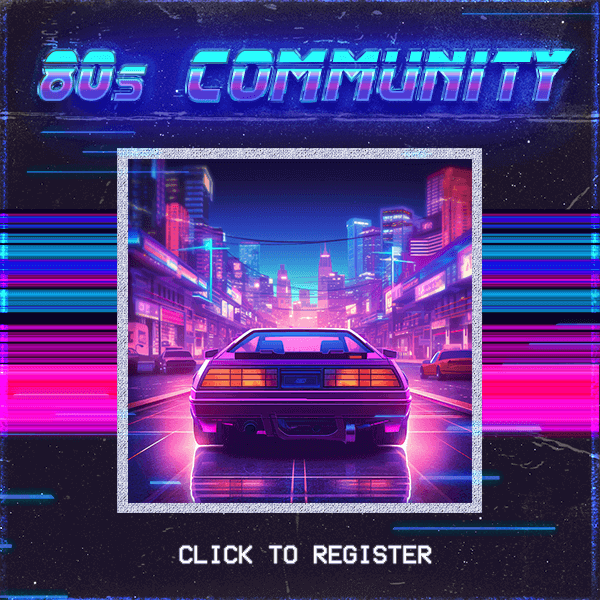The Rise of VHS and How It Transformed 1980s Entertainment
There are few innovations that shaped the 1980s as profoundly as the videocassette recorder and the humble VHS tape. Together, they changed not just how people watched movies but how they connected with entertainment itself. Before the arrival of home video, movies belonged to theaters and television schedules. By the end of the decade, they belonged to everyone. The living room became a cinema, and the world of entertainment was never the same again.
The Beginning of a Revolution
In the late 1970s, the concept of watching a movie at home was still considered futuristic. Film studios controlled their releases tightly, and television stations aired films on fixed schedules. Families had to plan their evenings around broadcast times. But everything began to change as the videocassette recorder entered the consumer market. What started as a luxury item soon became as common as a toaster.
The first time someone slipped a tape into a VCR, pressed play, and saw a full movie on their own television screen, it felt like magic. No tickets, no waiting, and no interruptions. It was the kind of power that people had never experienced before. The movie industry was about to face one of its biggest shifts, and the audience was now in control. The 80s Tech Boom A Decade of Digital Revolution
The Video Store Experience
One of the most defining symbols of this new era was the neighborhood video rental store. These places were more than just shops. They were social gathering spots filled with excitement and curiosity. Shelves stacked with colorful boxes created a visual feast that captured the imagination. Families made Friday night trips to the video store a ritual.
Walking through those aisles was an adventure of its own. The smell of plastic cases and the sound of tapes clicking open filled the air. People browsed titles, debated choices, and read the dramatic summaries printed on the back of every box. The movie you chose said something about you. Maybe you picked a blockbuster action film, a horror flick to scare your friends, or a comedy to share with family. Either way, the selection process was half the fun. The Rise and Fall of the Mall in the 1980s A Cultural Hub of a Generation
As time passed, small independent video stores became neighborhood landmarks. Some owners even offered membership cards that regulars carried proudly in their wallets. Renting a movie was more than a transaction. It was a shared experience that built local connections and made entertainment personal.
The Studios Fight Back
At first, Hollywood was terrified of home video. Studio executives feared that if people could watch movies at home, no one would go to theaters. Lawsuits were filed against companies that manufactured VCRs, and there was even talk of banning the machines. But the public had spoken, and there was no turning back.
When the industry realized it could profit from selling tapes directly to consumers, everything changed. Movies that had disappeared from circulation were suddenly available again. Classic films, cult favorites, and even low budget productions found new life on store shelves. Entire new revenue streams opened up, and the phrase “direct to video” became part of the entertainment vocabulary.
The Growth of Home Movie Collections
By the mid 1980s, it was no longer enough just to rent. People wanted to own their favorite movies. Living rooms became mini libraries filled with neatly stacked tapes, each with handwritten labels or colorful box art. Collecting movies became a hobby and a status symbol. A wall of tapes was proof that you truly loved cinema.
Owning movies also meant being able to revisit beloved stories again and again. Children wore out their copies of animated classics. Teenagers memorized every line of their favorite comedies. Horror fans hosted movie nights that lasted until sunrise. The ability to rewatch created deeper emotional connections between audiences and films. The VHS Shelf Project
The Golden Age of Home Horror
No genre benefited more from the rise of VHS than horror. The home video market gave filmmakers a way to reach audiences directly, bypassing theaters altogether. Independent producers could now create films that might have been too risky or controversial for mainstream distribution. The result was an explosion of creativity and imagination.
From gory slasher films to supernatural tales, horror thrived in the video store era. People gathered for all night marathons, discovering terrifying gems that had never been shown in local cinemas. For many, this became their introduction to filmmakers who would go on to define the genre for decades to come. Why 80s Horror Films Were the Best: A Golden Era of Fear and Innovation
It was also during this time that horror fandom began to build a strong community presence. Magazines, fan clubs, and word of mouth helped these movies spread. The forbidden nature of some titles only added to their appeal. Renting a horror film that your parents might not approve of became a teenage rite of passage.
The Cultural Impact of VHS
The influence of VHS extended far beyond the entertainment industry. It changed the way people interacted with media. The power to record shows and movies gave rise to new habits. Families recorded their favorite series, paused for snack breaks, and even fast forwarded through commercials. It was the birth of a new kind of control that modern streaming services continue to imitate. Saturday Morning Fever 80s Cartoons That Changed the Game
Educational tapes, workout programs, and homemade recordings also flourished. Schools used videotapes for teaching, fitness instructors became celebrities, and home movies captured family moments like never before. VHS wasn’t just about watching Hollywood. It was about documenting life.
Competition and the Betamax Battle
Before VHS became the household standard, there was a war between competing formats. Sony introduced Betamax, a technically superior system that offered slightly better picture quality. JVC introduced VHS, which allowed longer recording times and was cheaper to produce.
The outcome of the format war came down to accessibility. Consumers wanted more time per tape and a lower price, and VHS delivered both. Once major rental stores adopted VHS as the default format, Betamax faded into history. This victory set the pattern for later format wars in the digital age, from DVDs to Blu-ray and eventually streaming. The 80s Tech Boom A Decade of Digital Revolution
How VHS Changed Movie Marketing
The home video boom also changed how movies were advertised. Studios began to create distinctive box designs to grab attention from across the store. Cover art became an art form in itself. Horror movies often used bold imagery, while comedies relied on expressive photos and colorful titles. These covers became collectibles, and many fans still remember them more vividly than the movies they promoted.
Television commercials and magazine ads also began promoting movies as home video events. Owning a movie was presented as a sign of taste and sophistication. The ability to pause and rewind even influenced how people studied films, from aspiring directors to ordinary fans analyzing their favorite scenes.
The Social Experience of Watching at Home
Perhaps the most lasting impact of VHS was the shared experience it created. Families gathered around the television for movie nights with popcorn and dimmed lights. Sleepovers became mini film festivals, where kids traded tapes and introduced each other to new favorites. Couples shared first dates in living rooms instead of theaters.
This shift in setting changed how people connected emotionally with entertainment. It made viewing personal. You could laugh, cry, or scream without worrying about strangers around you. This intimacy deepened the relationship between audiences and their favorite films. High School in the 1980s: Teen Life and Culture
The Decline and Lasting Legacy
As the 1990s approached, technology advanced again. DVDs arrived with sharper images and special features. Eventually, digital downloads and streaming services replaced physical media entirely. Video rental stores that once seemed unstoppable began to vanish, one by one.
Yet the influence of VHS never truly disappeared. Collectors still seek out old tapes, appreciating their unique cover art and nostalgic charm. Many fans argue that the imperfections of VHS recordings add warmth and authenticity to the experience. The format represents an era when entertainment felt tangible, when rewinding a tape was a small but meaningful ritual. Best 80s Movies Everyone Should Watch at Least Once
Looking Back on the VHS Revolution
The rise of VHS did more than change how people watched movies. It democratized entertainment. It allowed families to shape their own viewing habits and gave forgotten films a second chance at life. It fostered creativity, expanded cultural access, and laid the groundwork for the media freedom people now take for granted.
In many ways, the VHS era represents the heart of the 1980s. It combined innovation, independence, and a sense of shared discovery. It taught people that great stories could belong to anyone, anywhere, at any time.
The world may have moved on to streaming platforms and digital libraries, but the spirit of VHS remains alive in every person who still feels a thrill when they see that familiar black cassette. The era of rewinding tapes, neighborhood rentals, and movie nights at home will always stand as one of the greatest revolutions in entertainment history.











